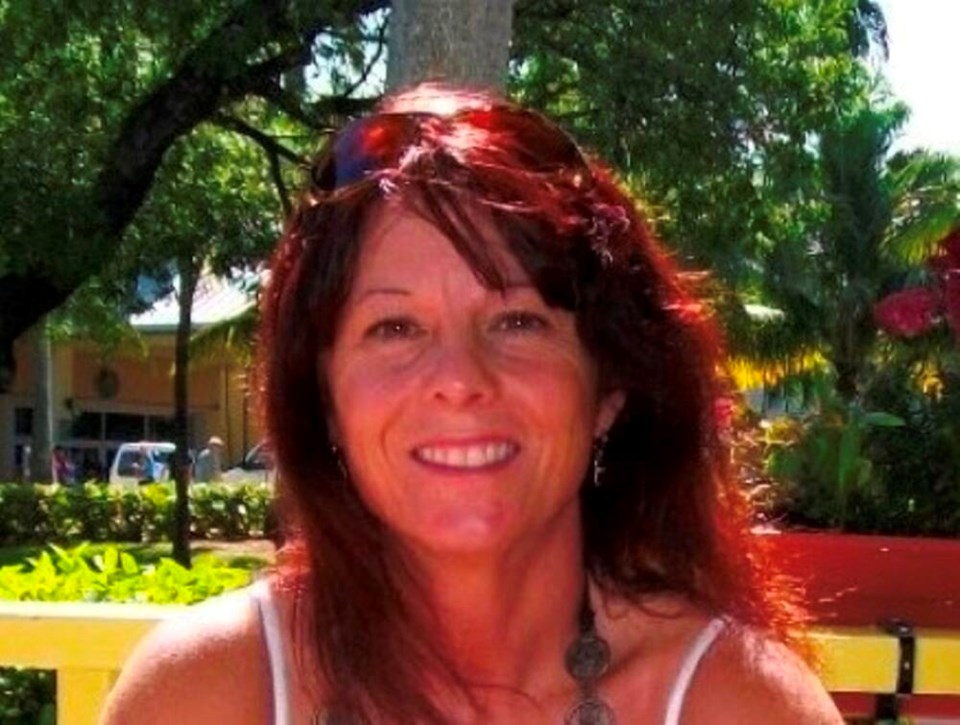A woman whose mother died in the rapids at Marie Canyon is hoping the recent death of a Vancouver man at the same location will spur change along the dangerous portion of the Cowichan River.
Stephanie Bonnar, who now lives in Nanaimo, doesn’t want people to stop enjoying the recreational delight of a river float on a summer day, but she does want clear signage warning of the Marie Canyon rapids.
“At the end of the day, life is short you should go out and have fun — but you going out and having a fun day shouldn’t be what ends your life,” she said.
Bonnar’s mother, Lesley Bonnar, was 50 when she drowned on the river in summer 2017. Both Bonnar and her mother lived in Duncan at the time.
That day, she drove her mom and a friend to the river, and her mom said they knew about the dangers of Marie Canyon and planned to exit the water before they reached the rapids.
After receiving a call from RCMP later that day, Bonnar learned that her mother hadn’t gotten out in time.
“I was genuinely shocked because my mom wasn’t one to take unnecessary risks and she knew the dangers, she had made it very clear to me,” Bonnar said. “I went down to see the sign myself, and what I could see was that the sign was off to the side [and] I’d say quite easy to miss if you were talking to a friend or if you [were] facing the wrong way because it’s only on the one side [of the river].”
The Lake Cowichan Fire Department is clear: The only reasonably safe tubing on the river is between Cowichan Lake and Little Beach. Beyond that, exit and access points are scarce, cell service starts to cut out, and there are branches, trees and, eventually, rapids.
But the Skutz Falls to Marie Canyon portion of the river is not an unpopular route, and Bonnar notes that until the rapids come into view around the river bend, it’s a mostly calm float.
That’s exactly what concerns her.
Bonnar’s been talking with B.C. Parks, which is responsible for the Cowichan River Park Management Planning program, and is pushing for more signs.
“The river is nice and calm in that area, and then the minute you come around the corner after this nice long stretch, you’re in the rapids,” she said. “When I read the articles about the gentleman who passed, it said he did not intend to go down Marie Canyon either and he was also aware of the dangers.
“That really stood out to me. They both had the intentions of not entering that part of the river and they both still ended up down there,” she said. “Hopefully, we could see some signage before next summer and we won’t have another death on the river.”
In an email, the Ministry of Environment and Climate Change Strategy said “appropriate signs of hazards” are posted along the river within the park and pointed to a page on its website that lists risks in the area, including severe rapids, log jams, and partially and fully submerged trees.
“B.C. Parks encourages all visitors wishing to swim, kayak, canoe or float in this area to familiarize themselves with potential risks prior to entering the river,” the email said.
The Tube Shack, a tube rental company in Lake Cowichan, provides a shuttle service that picks people up at Little Beach, and doesn’t rent to anyone who plans to tube from Skutz Falls to Marie Canyon, said owner Aaron Frisby.
“Everyone that has an incident down there has a plan to get out before Marie Canyon,” Frisby said. “Everyone thinks they have time. I believe there should be a sign at Skutz Falls where people get in, making people aware of the danger.”
Dale Miller, executive director of the Lifesaving Society of B.C., a non-profit that focuses on water safety, said 24 British Columbians have drowned so far this year, down from 36 during the same time period last year.
“One of the things we encourage is very conspicuous and stark signage to make it really clear when there’s a serious danger,” Miller said. “And we would love to see more public access rescue equipment.”
Miller said municipalities can reach out to the society to request equipment such as rescue tubes and life rings for areas of high concern. But he also said people getting into the river need to know their route ahead of time, as well as the water conditions and any limitations in their group.
“Know the water you’re going into [and] make sure you’ve got a plan if something were to happen,” he said. “If there’s a member of the group that’s a non-swimmer, anticipate they could fall out of their tube and it could float away from them. Does someone have a throw bag or some other plan to help rescue that person?”
He said the society would like to see tubers wearing life-jackets, “but I know boaters are more likely to do that than people lounging on a tube floating down a river on a sunny day.”
Bonnar said her mother, who was a psychiatric nurse, was a strong advocate for safety and looked out for others to make sure they were safe.
“I want to carry that on for her and make sure that we don’t miss opportunities for awareness,” she said.
“She’s inspired me to look out for other people.”



